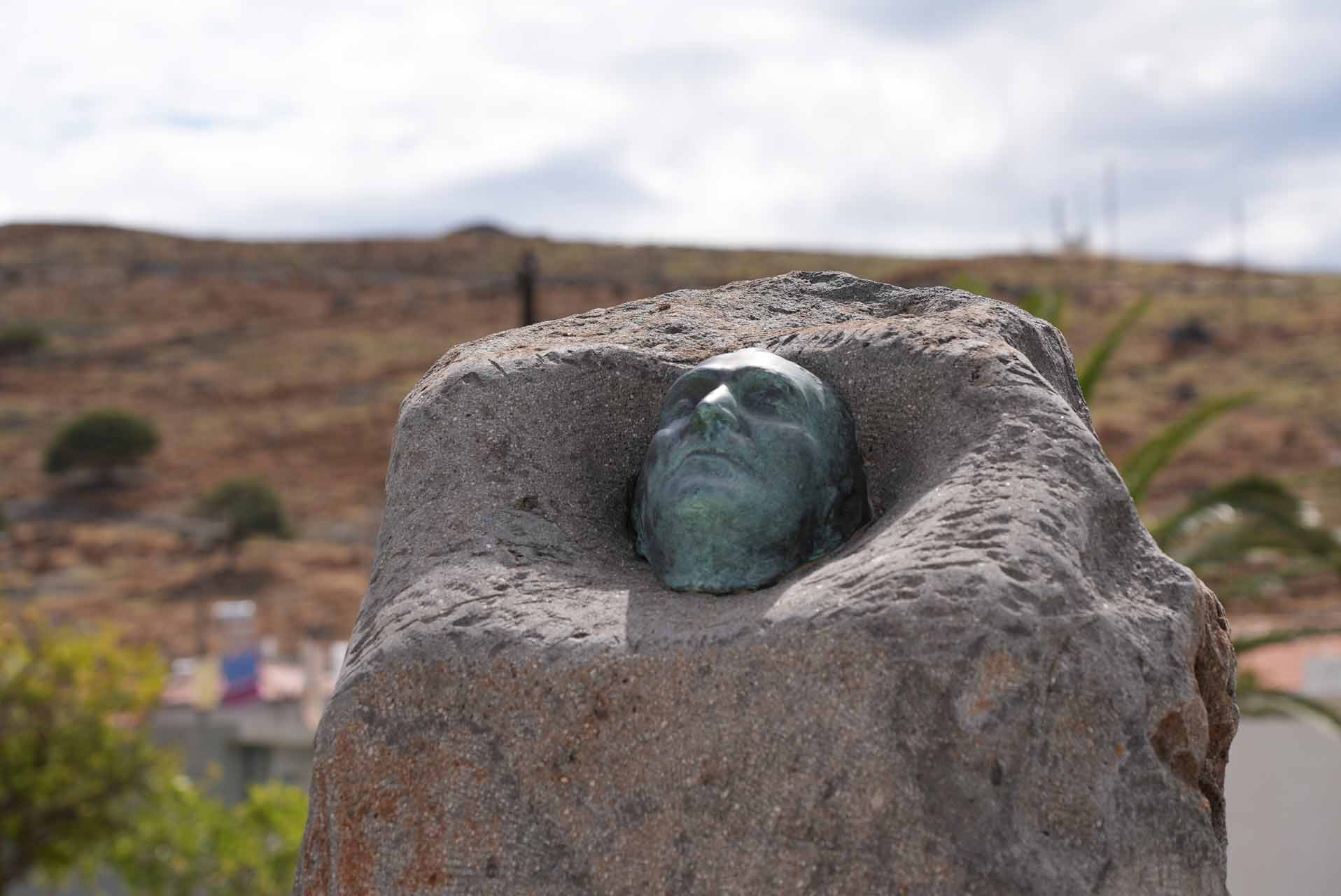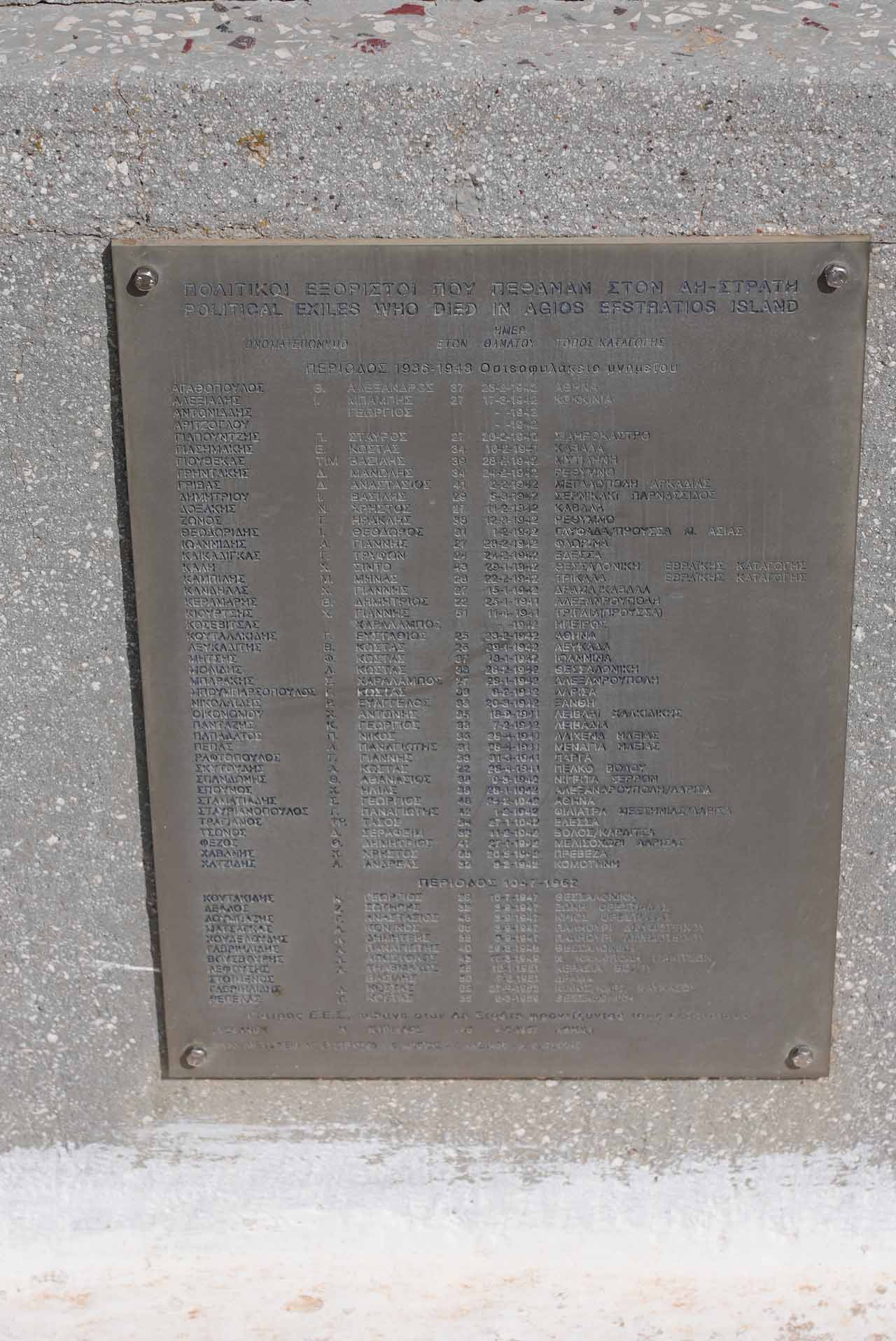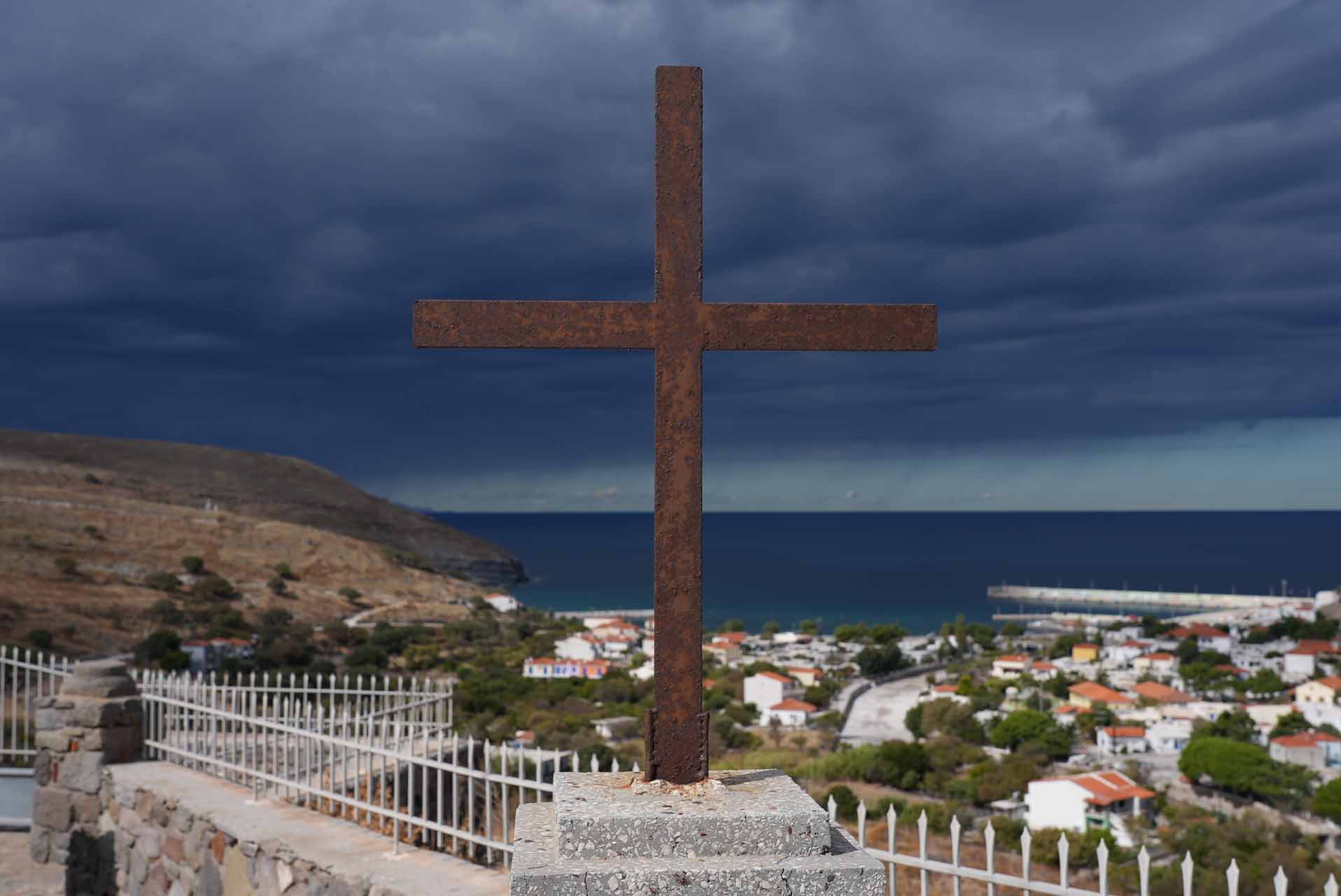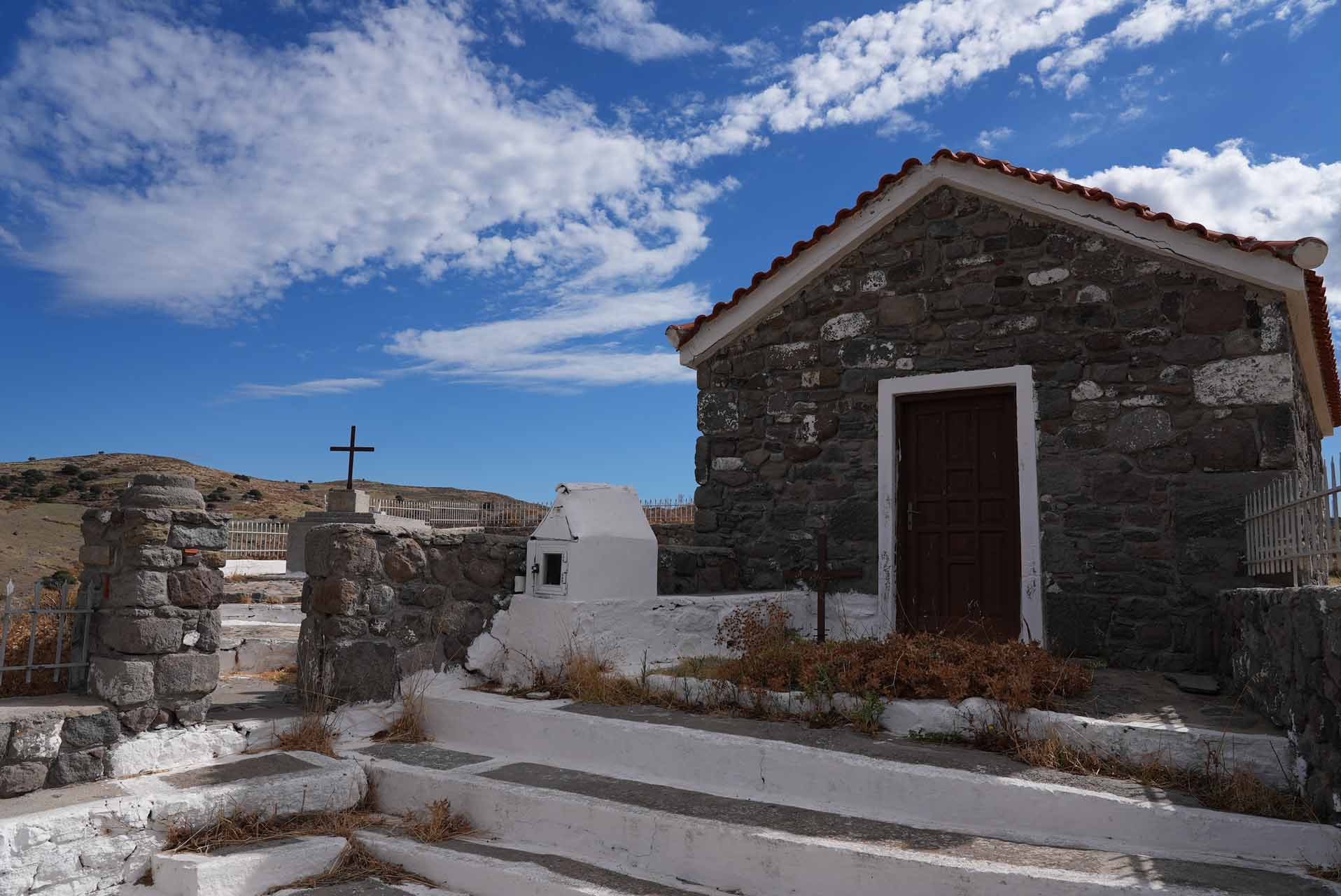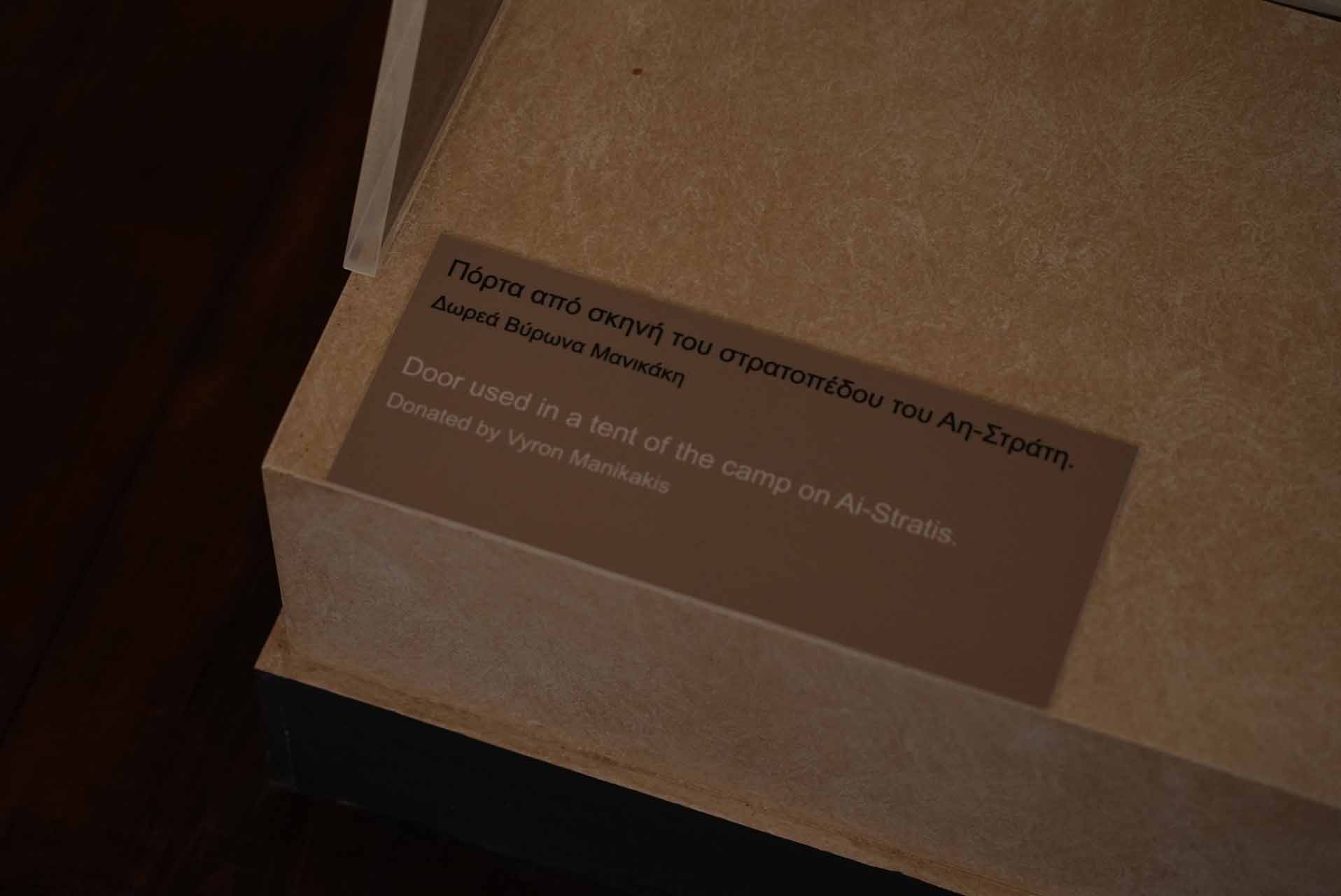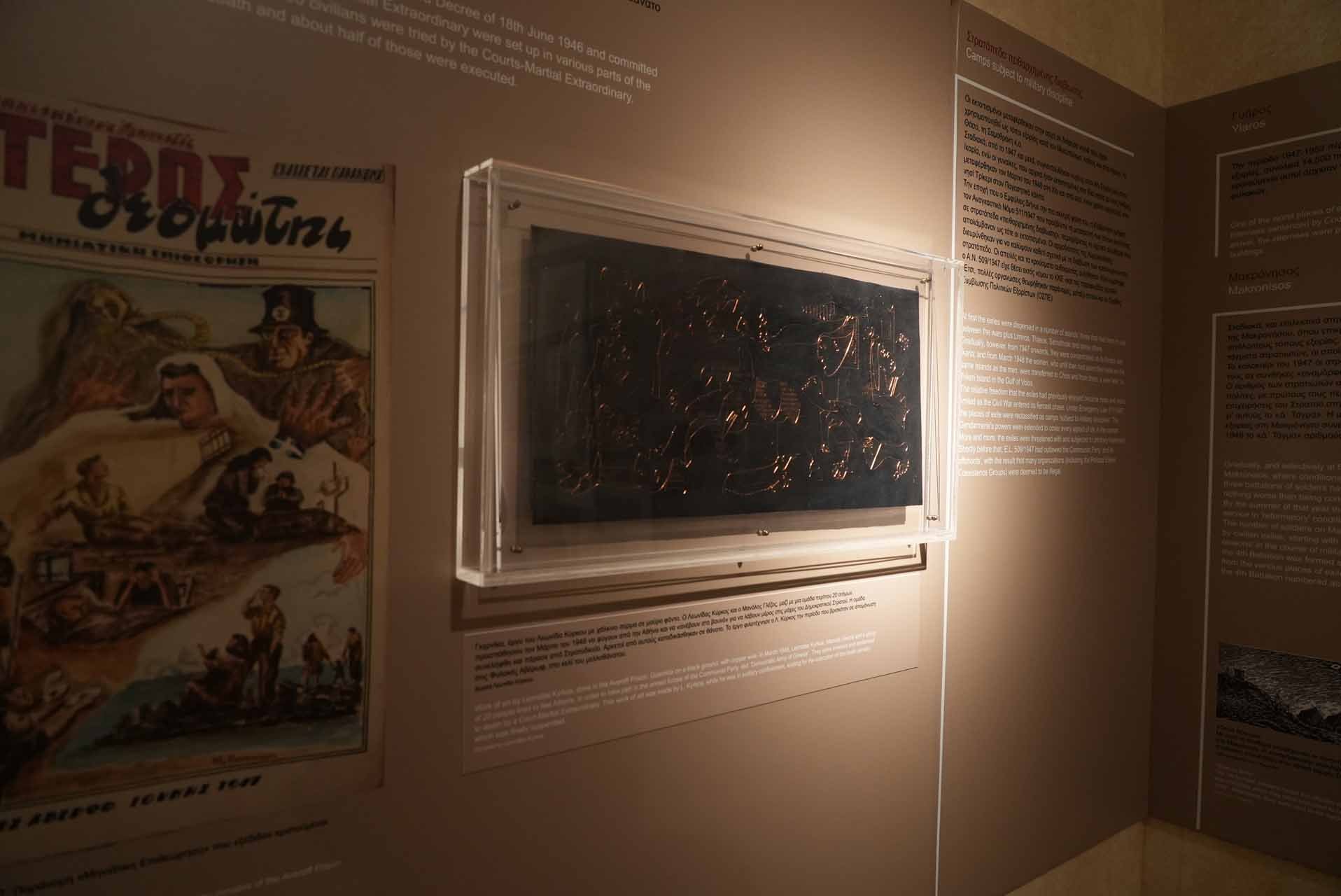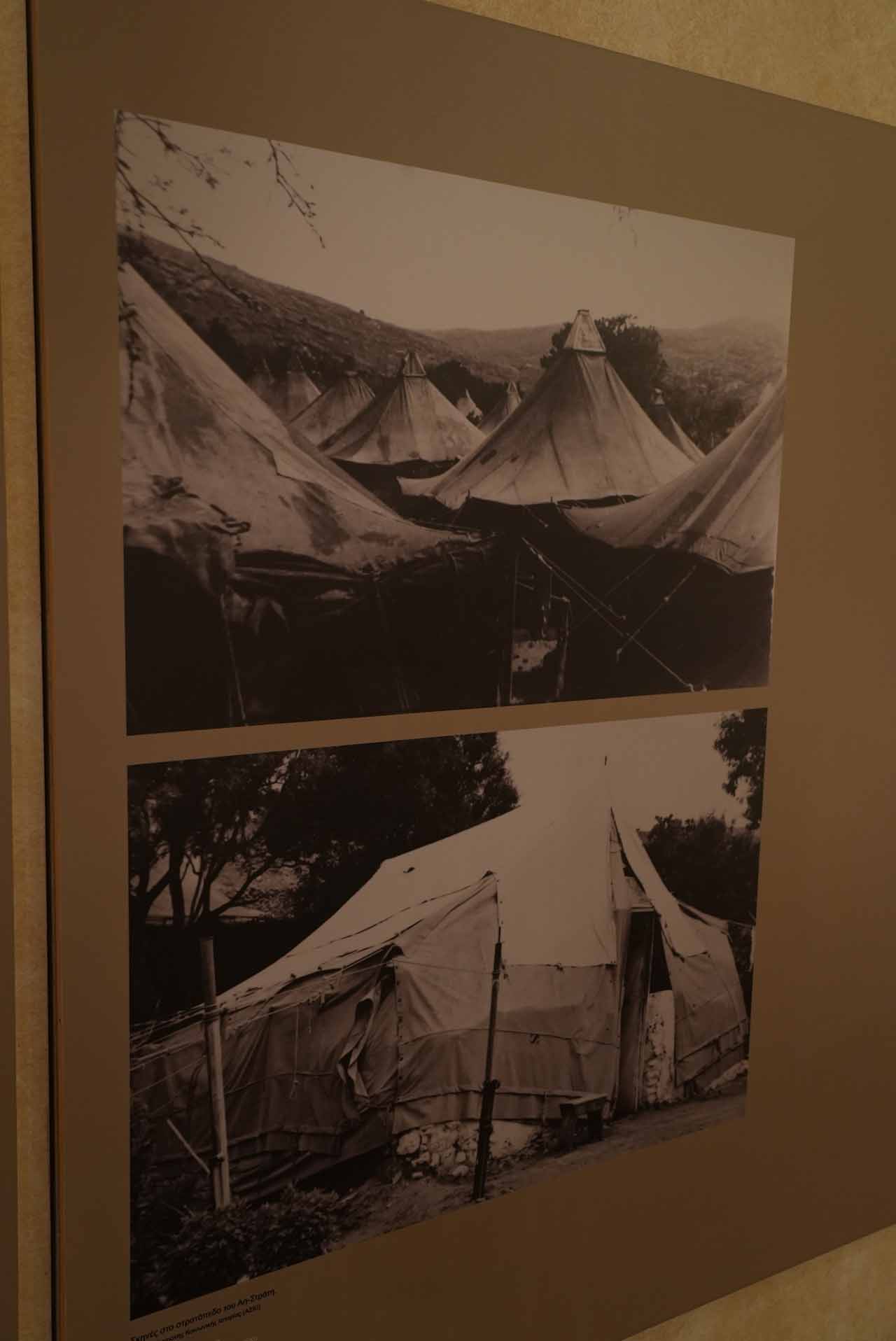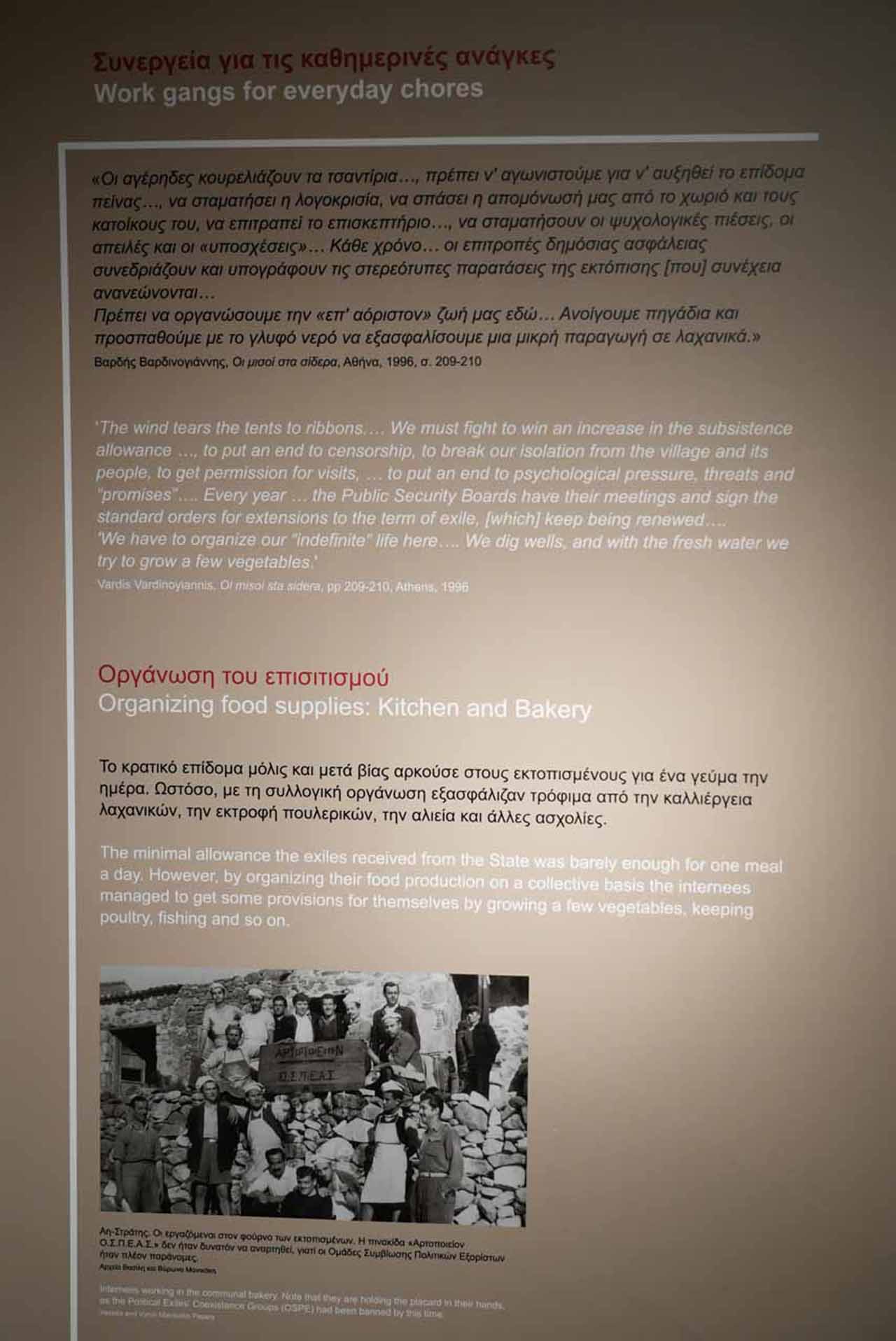For decades, in collective memory, the name of Agios Efstratios was intertwined with exile, just like Gyaros, Makronisos, or Ikaria. Starting with the “Idionymo” of 1929 and the Metaxas regime shortly thereafter, waves of exiles arrived on the island, while the onset of the German Occupation worsened the already difficult conditions for political prisoners. The consecutive years of the island’s use as a place of exile continued at least until 1963, and the Junta of the Colonels also used the island as a place of isolation for its political opponents.
The systematic arrival of people on the island and their prolonged stay there, without being provided with the essentials for their survival, prompted the exiles to organize themselves into groups of cohabitation and cooperation in order to survive. From the moment of their arrival on Agios Efstratios, the exiles were incorporated into the camp without access to the local settlement, except for the “Maraślios” school, where they reported to the gendarmerie. After some demands, they were allowed to use ruined buildings, which they repurposed as hospitals, storage rooms, classrooms, or accommodations. The need for housing for the exiles, especially the sick, became increasingly urgent, as unpredictable weather conditions were a constant obstacle to their survival, and many exiles lost their lives on the island due to illness and starvation.
Despite the frequent attempts of the gendarmerie, with regular relocations to and from other exile islands, the exiled population managed to organize itself with the goal of improving their living conditions. Those who had practiced technical professions before their exile collaborated to carry out a series of projects that helped not only the exiled community but also the permanent residents, such as cleaning streams to prevent flooding or the creation of the island’s first cart-accessible road, known as the “Boulevard of the Bolsheviks.”
Similar to the actions of the craftsmen, the activities of doctors, tailors, and farmers/fishermen were significant, to the point where the difference in living conditions was vast, especially between 1951 and 1957. At the same time, artistic creativity flourished on the island, as the exiles organized musical and theatrical performances for the community.
One characteristic that set Agios Efstratios apart from most other places of exile was the coexistence of exiled men and women on the island. Although women were welcome in the community, the exiles seemed to have made efforts, at as strict a level as possible, to prevent relationships between them for various reasons. At the same time, the female population, which was numerically much smaller than the male population, did not participate in the artistic or athletic events organized by the men.
Despite Agios Efstratios being a place of exile for so many decades, with all the negative connotations of such a situation, the political prisoners on the island were not subjected to the much stricter restrictive measures faced by exiles on other islands, such as Makronisos. This fact may have played a role in the organization of the population, while also allowing artists like Ritsos and Leviditis to express through their works the thoughts and experiences they lived during their time on the island.




